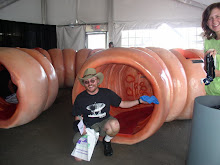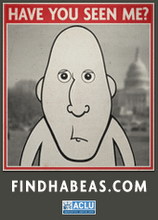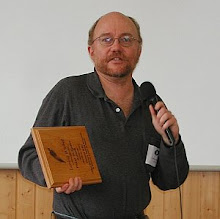How did USA for Africa and Live Aid suddenly morph to a global insurrection at the end of the 1980s, and was Francis Fukuyama hstening to Top 40? 1985-1990
I began 1985 with a move to the Bay Area to write business analyses for the high-tech industry. Just about the time of the move, the pop music industry suddenly found its social voice with a flurry of Live Aid, Farm Aid, and anti-Sun City (South Africa) concerts to raise money and awareness for worthy causes. Bob Geldof of The Boomtown Rats played a critical role in trying to meld artists who had already expressed a political conscience with those guaranteed to have a big draw. Live Aid, with separate concerts in London and Philadelphia, was the most iconic, and was a follow-on to the “We Are the World” single in early 1985, both efforts intended to address starvation in Ethiopia.
The Live Aid concert was
known as much for spectacle – a Led Zeppelin reunion, a Freddie Mercury
performance with Queen, dual-continent appearances by Phil Collins, and the
last Duran Duran performance for 20 years – as it was for philanthropy
effectiveness, a topic which stirred much controversy. The hardcore punks
enjoyed poking fun at big-name artists’ concern for East Africa. Live Aid also
set the stage for later duds, like the multi-continent Net Aid sponsored by
router manufacturer Cisco Systems Inc. in 1999.
Initially, San Francisco was
a big draw for those like me who were new to the city, with venues like I-Beam
and Bottom of the Hill. Innovative artists like Barbara Manning and Seymour
Glass formed bands such as San Francisco Seals and World of Pooh, harbingers of
a larger 1990s Bay Area underground. The East Bay was the place for
fundamentalist punk, thanks to the legendary 924 Gilman St. club in Berkeley. I
was surprised to see the San Jose/Silicon Valley area was spawning its own
bands like Daddy In His Deep Sleep, which seemed to follow an indie ethic more
than the larger cities to the north. There was a strange, nearly invisible tech
underground manifested in the quarterly Processed World magazine,
largely aimed at entry-level tech workers, but forming the basis of what later
became boing boing. Yet the Silicon Valley critiques
were drowned out by much larger movements in San Francisco and the East Bay to
address AIDS (ACT UP) and continued struggles in South Africa and Central
America.
On the national front, a few artists
tried to suggest a partial awakening from somnambulance – Bruce Cockburn’s
fierce “If I Had a Rocket Launcher,” for example, or David Bowie’s
collaboration with Pat Metheny, “This Is Not America.” But there was a lot of
performance that masqueraded as rebel behavior, including women artists like
Pat Benatar, and male faux-punks like Billy Idol. One might have thought, given
the ACT-UP response to AIDS policies, a strong LGBTQ+ artist presence creating
a unified front of musicians, but singers like Morrissey and Robert Smith
seemed to stand for their own morosity, nothing more. In fact, the lesbian
record labels of the late 1970s, who first brought Holly Near, Cris Williamson,
and Meg Christian to national awareness, demonstrated more collective action
for the queer community in those years than anything in the mid-1980s.
Nevertheless, art without a cause or even a clear message hit great heights in 1985 – Kate Bush’s Hounds of Love, the debut Suzanne Vega album, Husker Du’s New Day Rising, REM’s Fables of the Reconstruction. The intensely personal visions of the best new albums gave a preview of sorts to the diverse landscape of the DIY indie music that would arrive in the 1990s. The best rarely would carry a “we are the world” sort of message, but would make droll and very cryptic commentary on the world at large. And at least in the case of Kate Bush, people still were listening nearly 40 years later.
What seemed equally true of
both late-1980s and 1990s artists was that musicians in both eras appeared reticent
to take on the yuppies – the 20-somethings who overtly abandoned social
concerns in the early 1980s in favor of making lots of money. The continuing
escalation in the stock market due to high-tech startups was only occasionally
hit with such speed bumps as the late-1980s savings and loan crisis, the 2000
Internet slump, the much larger 2007-08 mortgage and banking crisis, yet
yuppies kept up their pointless material striving for 10, 20, even 30 years,
and few musicians wanted to address that. It may have been that, unlike when
criticizing Reagan or faceless institutions, a finger pointed at yuppies would come
too close to the cartoon character Pogo’s famous line that “We have met the
enemy, and he is us.”
Since 1986 was the year I got
married, I tended to associate the year with “putting away childish things,”
and I worried that such changes would include dismissing pop music in general –
certainly a common behavior for those approaching middle age. Enough new bands
were simmering just below the surface – Pixies, Soundgarden, Chumbawamba, ‘Til
Tuesday – to make me willing to remain an avid music consumer. And the expansion
of rap into the mainstream certainly made pop music more interesting. Still, it
would take four years of constant pushing by the independent artists to make
the 1990s finally move beyond corporate control.
At least two positive aspects
of music digitization were evident by the mid-1980s, though a long way from
fruition. First, the expansion of CD manufacturing into contract plants allowed
smaller labels like Rhino, SST, and Dutch East India to offer both new releases
and reissues from bands that were both obscure and eclectic, from Meat Puppets
to Mission of Burma. These labels were ready to take advantage of the big indie
breakthrough of 1990. It’s worth noting that many existing bands spent the last
years of the ‘80s expanding their styles, to prepare ye the way of the DIY.
Swans went from harsh metal to Middle Eastern-influenced orchestral rock; Sun
City Girls went from Arizona hardcore to East Asian mysticism; Mudhoney and
Alice in Chains moved from earlier styles to align closer to the Young Turks of
the Pacific Northwest like Soundgarden and Nirvana. Something was definitely in
the air.
Another positive aspect was
that the convergence of computer culture and pop music took its first hesitant
steps in the mid-1980s. The world was still close to ten years away from the
World Wide Web and ubiquitous web browsers like Netscape, and it would be a few
more years beyond that before music downloads and streaming services were
possible. But the first nascent online networks like The WELL (Whole Eath
‘Lectronic Link) popped up in mid-decade, followed by the arrival of Internet
protocols like TCP/IP, which turned isolated local networks of computer nerds
into global sharing communities. The music-centric interest groups on WELL and
other networks allowed the acceleration of tape sharing, which became the
equivalent of 1970s bootleg vinyl, but driven from the bottom up by the fans of
bands. Mainstream culture was only aware of the explosion of tape sharing by
Grateful Dead fans, but it actually expanded from dozens to hundreds of artists
during the mid-1980s, driving the engine of decentralized fandom that became a key
expander of music culture in the following decade.
At a subconscious level, the
summer of 1988 felt like a dam was about to break, exemplified by the reunion
of Pere Ubu and release of its classic The Tenement Year
album. My wife and I were in Stockholm
for the International AIDS Conference, and I found the new Ubu while perusing
Stockholm music stores. On the same trip, we took a train and ferry trip to
Leningrad (soon to be reverting to its old name of St. Petersburg), to check
out what Gorbachev’s perestroika meant on the ground. There were plenty of
street poets and buskers on the boulevards of pastel Victorians, along with
agitators taking advantage of the new opening. By the time we got back to the
U.S., new stirrings were happening in South Africa. Within months, the
Tienanmen Square uprisings and East European revolutions were under way.
Pop music still was taking
its time to break out of years of predictability, but new tunes from They Might
Be Giants, Midnight Oil, and Unwound had me convinced the great awakening was
not my imagination. Even the top pop charts displayed much more hard rock than
in mid-decade, exemplified by Poison, Bon Jovi, Van Halen, and Def Leppard in
the Top 10 – maybe not innovative rock, but a step above crooners. On rarer
occasion, a band with real indie cred, like Del Amitri or Faith No More, might
crack the charts.
What was evident throughout
the last couple years of the 1980s is that nostalgia exploitation had found new
markets. In the 1970s, nostalgia for the 1950s was satisfied by movies and TV
shows like American Graffiti and Happy Days, as well as by bands like Sha Na Na. As the 1980s
ended, a weekly chart would typically sport a re-recording of a 1960s or 1970s
song by a newer artist. It was not until the latter 1990s that the trend of
band reunions became common, but as more and more bands hit middle age, that
1990s reunion trend sported a shelf life extending to the 2020s and beyond,
eventually being augmented by more and more tribute bands.
The second half of 1989 seemed
infused with era-defining events, beginning with Tienanmen Square in early June
and ending with East European nation liberation and the fall of the Berlin Wall
in Oct.-Nov. In mid-October, the Bay Area suffered a massive earthquake that
finally convinced my wife it was time to leave (I had grown tired of Bay Area
culture at least two years earlier). We began looking for affordable housing in
Colorado by the end of the year.
In retrospect, we were lucky that
pop music didn’t display the same type of jingoist hubris that U.S. diplomats
did after Gorbachev “freed” the Central European nations to pursue their own
fates. Instead, the slacker sound, whether in the heavy Nirvana instantiation
or the breezier Pavement version, displayed a languor that could not be turned
into the type of tub-thumping displayed by Springsteen’s Born in the USA six years earlier. Even if most 1990s songs were
at less than speedcore pace, 1990 began with its own type of excitement –
career-defining albums by They Might Be Giants, Tori Amos, The Sundays, and
Toad the Wet Sprocket. In fact, the entire year of 1990 in both album releases
and singles charts carried the feel of waking from an opiated dream. There
wasn’t a unifying theme as there had been in the psychedelic or punk eras, but
there was palpable excitement.
Conventional wisdom holds
that the entire decade of the 1990s was the low point for the manufacture of vinyl
LPs, followed by a slow-building resurgence in the 21st century, but
that’s not quite true. In aggregate numbers, the observation might hold water
because of the small lots that indie record labels issued for both CDs and LPs.
But the last half of the 1980s was when vinyl was reduced to little but 12”
singles in the hip hop and dance/EDM worlds. I remember The Swans’ 12” EP of Joy
Division’s “Love Will Tear Us Apart” was my only vinyl purchase of 1988, and
that represented a point of low tide. The indie labels of the 1990s made a
point of offering titles on vinyl, often as special art objects with hand-made
covers. In most cases, a vinyl release cost less in a retail store than a CD
release.
Through all of the 1990s and
2000s the two formats were at least at price parity, and this held until the
mid-2010s, when a shortage of lacquer worldwide, and a lack of vinyl pressing
plants to respond to increased demand, caused the price of vinyl to explode to
retail prices typically twice that of CDs. But for a brief period of time in the early to
mid-1990s, vinyl lovers experienced a special heyday. The catch was that most
of the vinyl titles could only be found through special print catalogs or in
special orders from record stores with savvy owners. This was well before the
days of Discogs or eBay, and even prior to the era when every record label
sported a web site taking customer orders. The first such online music ordering
outlets only arrived around 1995-96. The vinyl was out there all right, but you
had to know where to find it.
Coming in three weeks (Aug. 9) - Indie Rock, Prospects and Problems - 1990-1997
If you assumed it was all about Nirvana and grunge, you missed the entire message.











No comments:
Post a Comment